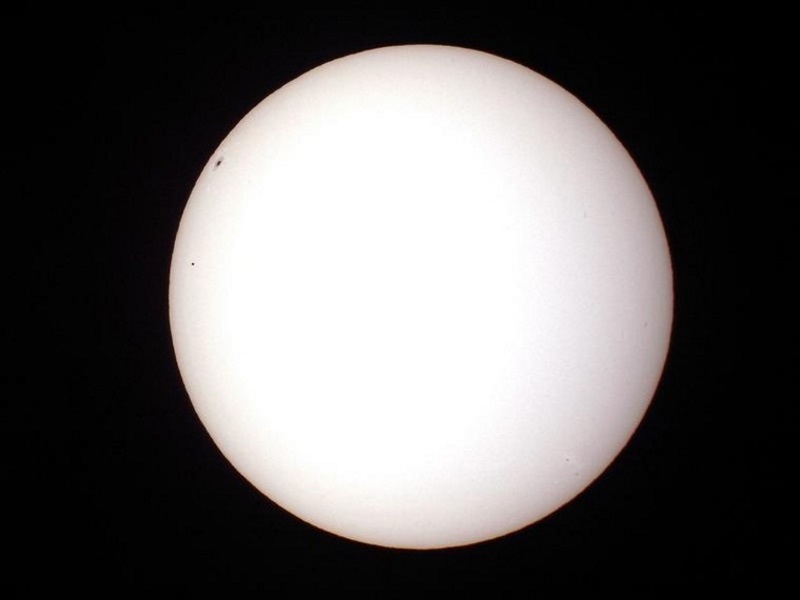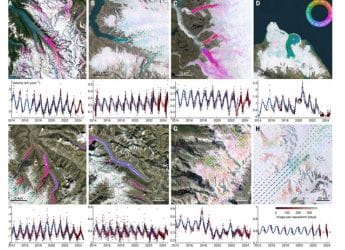- Home
- Science
- Science News
- Mercury Transit 2016: How to Watch and Everything Else You Need to Know
Mercury Transit 2016: How to Watch and Everything Else You Need to Know

The best vantage points to observe the celestial event, known to astronomers as a transit, are eastern North America, South America, Western Europe and Africa, assuming clouds are not obscuring the sun. In those regions, the entire transit will occur during daylight hours, according to Sky and Telescope magazine.
But Mercury is too small to see without high-powered binoculars or a telescope, and looking directly at the sun, even with sunglasses, could cause permanent eye damage.
Fortunately Nasa and astronomy organizations are providing virtual ringside seats for the show by live-streaming images of the transit in its entirety and providing expert commentary.
The tiny planet, slightly larger than Earth's moon, will start off as a small black dot on the edge of the sun at 7:12 a.m. Eastern (1112 GMT). Traveling 30 miles (48 km) a second, Mercury will take 7.5 hours to cross the face of the sun, which is about 864,300 miles (1.39 million km) in diameter, or about 109 times larger than Earth.
"Unlike sunspots, which have irregular shapes and grayish borders, Mercury's silhouette will be black and precisely round," Sky and Telescope said in a press release.
The event will come into view in the western United States after dawn, with the transit already in progress. The show will end at sunset in parts of Europe, Africa and most of Asia.
Nasa Television, available on the Internet, will broadcast live video and images from the orbiting Solar Dynamics Observatory and other telescopes. The show includes informal discussions with Nasa scientists, who will answer questions submitted via Twitter using the hashtag #AskNasa.
Other options for armchair astronomers include:
SkyandTelescope.com plans a live webcast with expert commentary, beginning at 7 a.m. EDT/1100 GMT.
Slooh.com, which offers live telescope viewing via the Internet, will host a show on its website featuring images of Mercury taken by observatories around the globe.
Europe's Virtual Telescope, another robotic telescope network, will webcast the transit at www.virtualtelescope.eu.
Scientists will take advantage of Mercury's transit for a variety of science projects, including refining techniques to look for planets beyond the solar system.
"When a planet crosses in front of the sun, it causes the sun's brightness to dim. Scientists can measure similar brightness dips from other stars to find planets orbiting them," Nasa said.
Mercury's last transit was in 2006 and the planet will pass between the sun and Earth again in 2019. After that, the next opportunity to witness the event will not come until 2032.
© Thomson Reuters 2016
Get your daily dose of tech news, reviews, and insights, in under 80 characters on Gadgets 360 Turbo. Connect with fellow tech lovers on our Forum. Follow us on X, Facebook, WhatsApp, Threads and Google News for instant updates. Catch all the action on our YouTube channel.
Related Stories
- Samsung Galaxy Unpacked 2025
- ChatGPT
- Redmi Note 14 Pro+
- iPhone 16
- Apple Vision Pro
- Oneplus 12
- OnePlus Nord CE 3 Lite 5G
- iPhone 13
- Xiaomi 14 Pro
- Oppo Find N3
- Tecno Spark Go (2023)
- Realme V30
- Best Phones Under 25000
- Samsung Galaxy S24 Series
- Cryptocurrency
- iQoo 12
- Samsung Galaxy S24 Ultra
- Giottus
- Samsung Galaxy Z Flip 5
- Apple 'Scary Fast'
- Housefull 5
- GoPro Hero 12 Black Review
- Invincible Season 2
- JioGlass
- HD Ready TV
- Laptop Under 50000
- Smartwatch Under 10000
- Latest Mobile Phones
- Compare Phones
- Realme P4x 5G
- OnePlus Ace 6T
- Nubia Flip 3
- Nubia Fold
- OPPO A6x 5G
- Samsung Galaxy Z TriFold
- Poco F8 Ultra
- Poco F8 Pro
- Asus ProArt P16
- MacBook Pro 14-inch (M5, 2025)
- Poco Pad M1
- Poco Pad X1
- Just Corseca Skywatch Pro
- Honor Watch X5
- Acerpure Nitro Z Series 100-inch QLED TV
- Samsung 43 Inch LED Ultra HD (4K) Smart TV (UA43UE81AFULXL)
- Asus ROG Ally
- Nintendo Switch Lite
- Haier 1.6 Ton 5 Star Inverter Split AC (HSU19G-MZAID5BN-INV)
- Haier 1.6 Ton 5 Star Inverter Split AC (HSU19G-MZAIM5BN-INV)

















